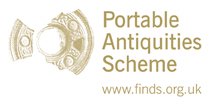Server check!
You are on the training database
Horse fittings
Two famous hoards in Britain featured bronze cheek-pieces, metal fixtures attached to a horse which, in combination with bits, harnesses etc. allowed a rider to successfully control his mount. Alongside this, winged-chapes (scabbard fittings) have been found in Britain, which hinted at being more practical for a mounted warrior. By comparison, horse-fittings and related artefacts are far more prevalent across Continental Europe than in Britain.
Cheek-pieces
Example:
Date range: c.1,140-1,020 BC (Wilburton metalwork phase)
Distribution: Extremely rare in Britain, with examples from the Isleham and Wilburton hoards being the most well known/documented.
Distribution: Extremely rare in Britain, with examples from the Isleham and Wilburton hoards being the most well known/documented.
Description: Cheek-pieces were cast bronze objects used to hold the bit in the horses' mouth, and have been found across Europe. Cheek-pieces can also be formed out of bone or staghorn, as noted by Balkwill (P.P.S. vol. 39 1973).
Bit
Example:
Date range: c.1,150-800 BC
Distribution: Exceptionally rare in Britain
Description: Although rarely found, metal horse bits were made and were utilised from the final stages of the Bronze Age, and on into the Early Iron Age. Balkwill (P.P.S. vol. 39 1973) notes that there are four basic types of bits: plain straight bar bits, twisted straight bar bits, bits to which cheek-pieces have been permanently fastened, and jointed bits. He also notes that the record is far from complete, owing to the absence of wooden examples, as well as large quantities of bone-bits found in the Swiss Lakes. Wooden bits are still used today as means of breaking in young horses, and a few have indeed been found.
Horse fittings
Example:
Date:
Distribution:
This is a term often given to bronze rings which are usually solid. In the late Bronze Age they would have been hollow or filled with lead. They are other found with other items which could perhaps have been part of a horses harness fittings but there is no concrete evidence that this interpretation is correct and it is thought perhaps tings of this type may not have been strong enough to be harness fittings.
References
-
Balkwill, C.J. (1973) The Earliest Horse-Bits of Western Europe. P.P.S. Vol. 39


